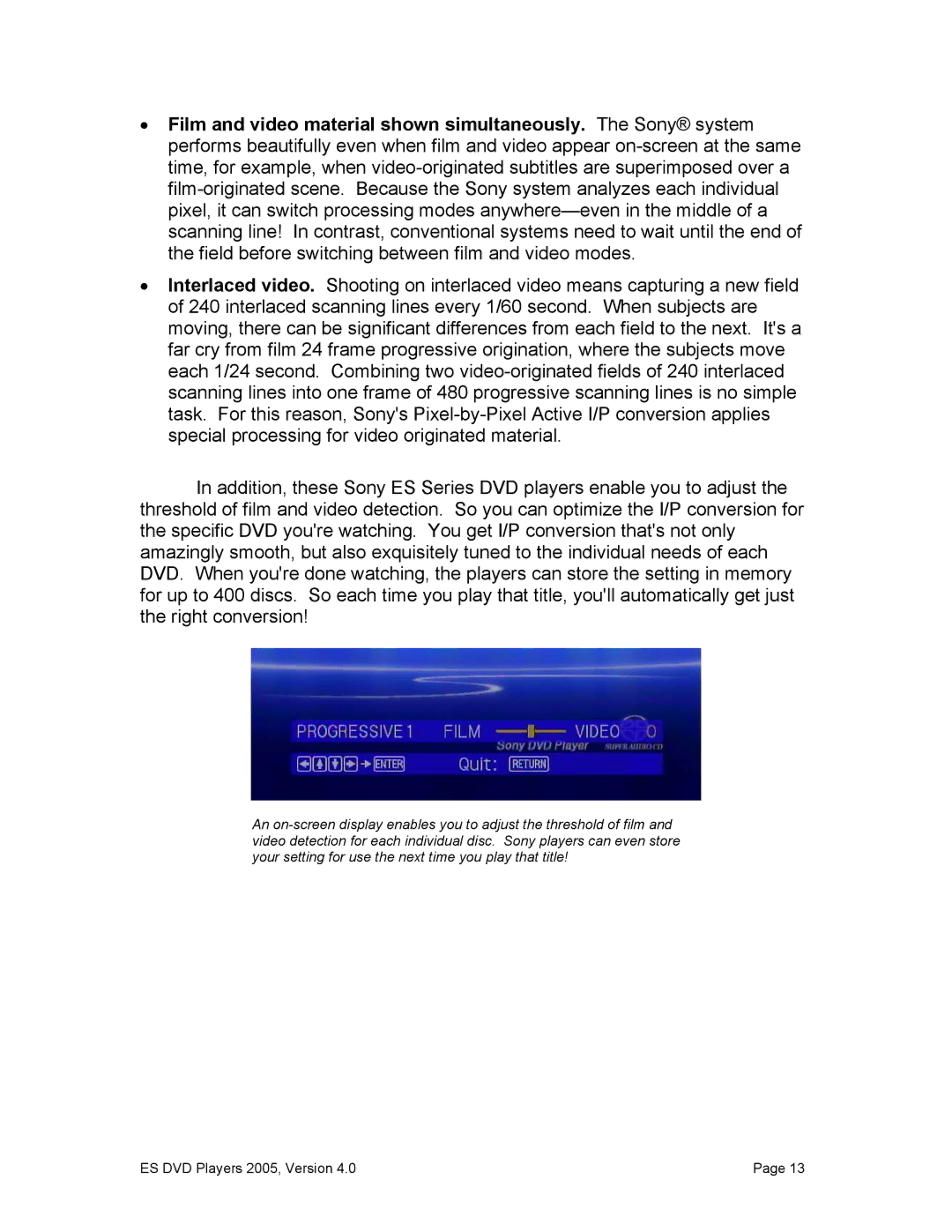
•Film and video material shown simultaneously. The Sony® system performs beautifully even when film and video appear
•Interlaced video. Shooting on interlaced video means capturing a new field of 240 interlaced scanning lines every 1/60 second. When subjects are moving, there can be significant differences from each field to the next. It's a far cry from film 24 frame progressive origination, where the subjects move each 1/24 second. Combining two
In addition, these Sony ES Series DVD players enable you to adjust the threshold of film and video detection. So you can optimize the I/P conversion for the specific DVD you're watching. You get I/P conversion that's not only amazingly smooth, but also exquisitely tuned to the individual needs of each DVD. When you're done watching, the players can store the setting in memory for up to 400 discs. So each time you play that title, you'll automatically get just the right conversion!
An
ES DVD Players 2005, Version 4.0 | Page 13 |
